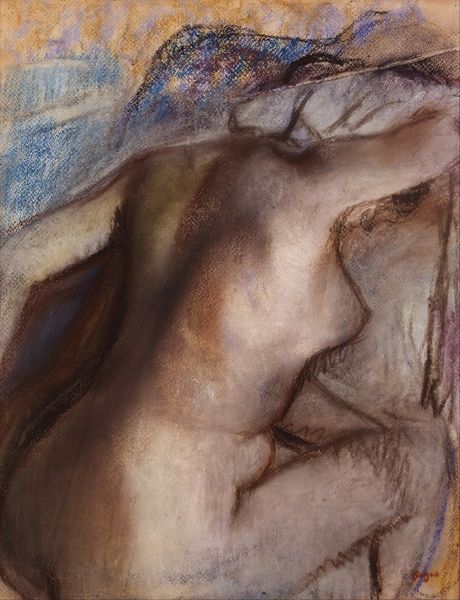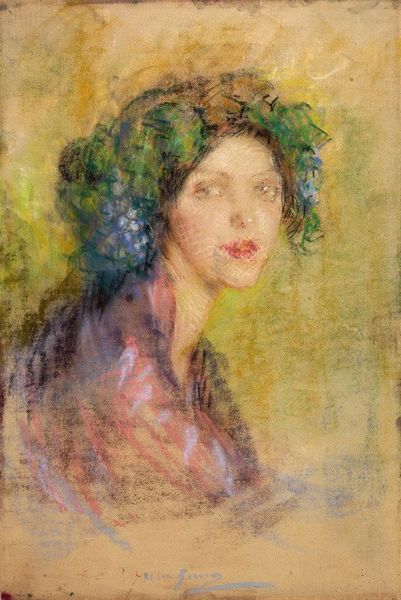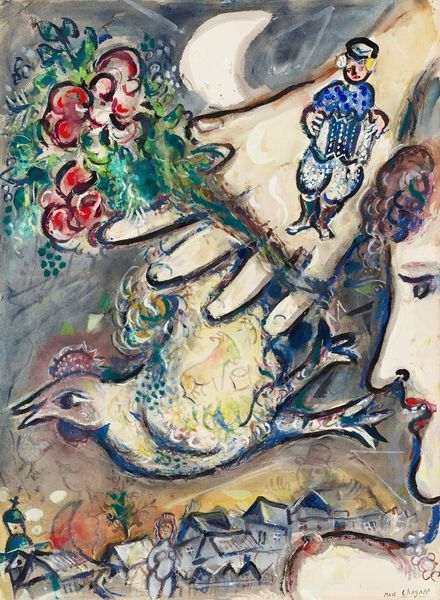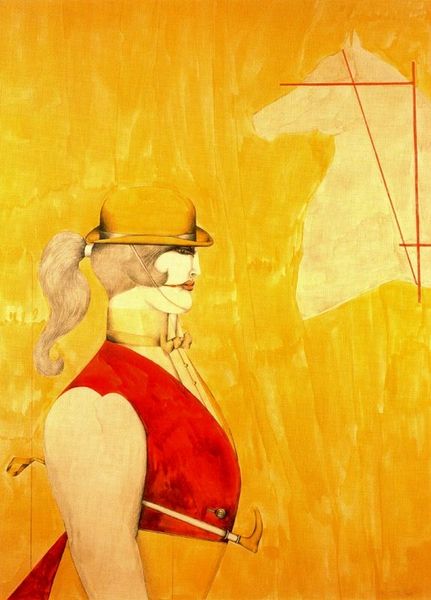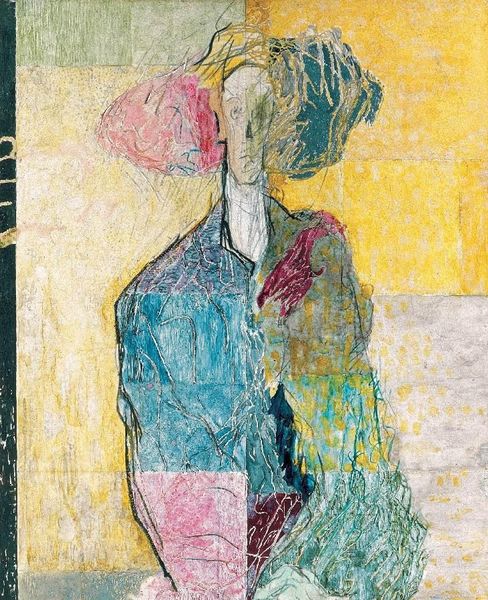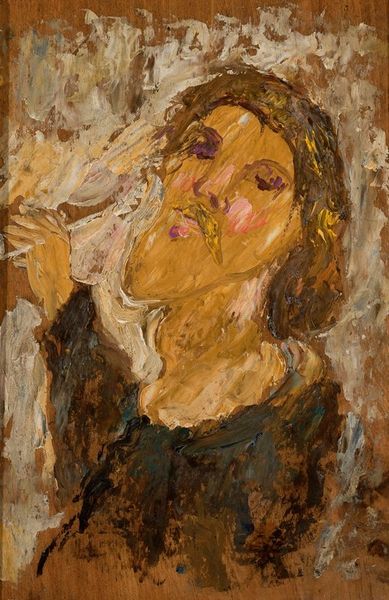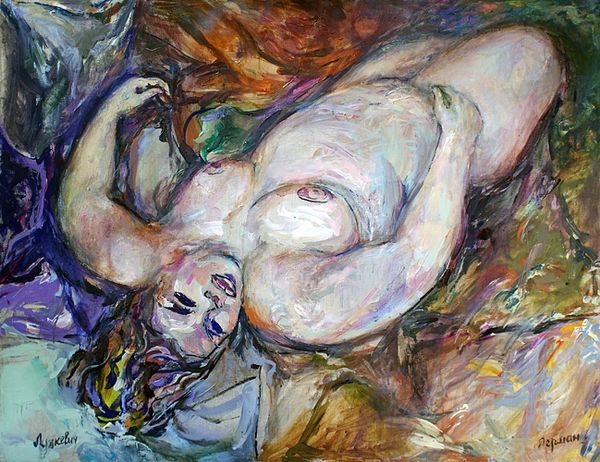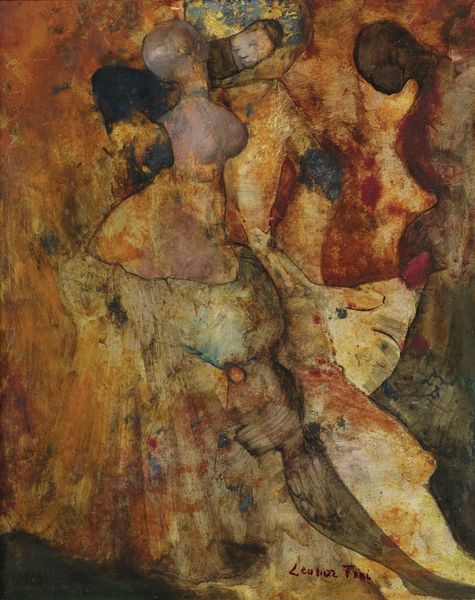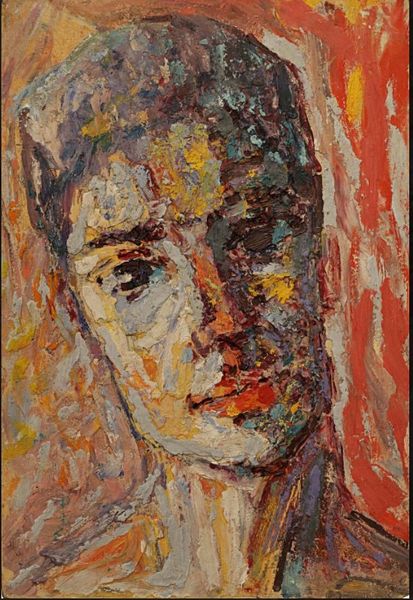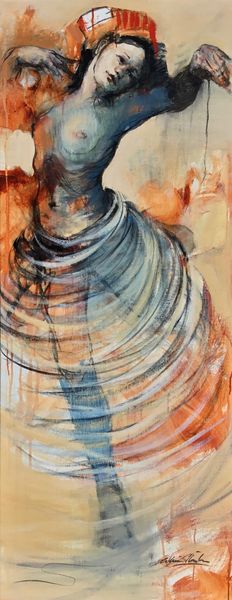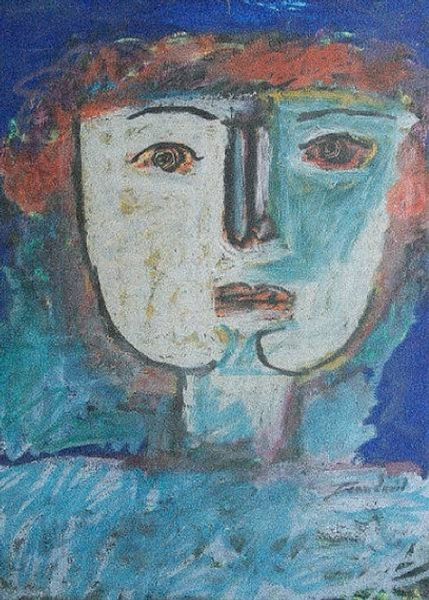
tempera, painting, oil-paint
#
portrait
#
figurative
#
tempera
#
painting
#
oil-paint
#
figuration
#
oil painting
#
expressionism
#
watercolor
Copyright: Public Domain: Artvee
Editor: We're looking at "Head of a Girl with Curls" by Tadeusz Makowski, painted in 1922. It seems to be made with both oil and tempera. It’s quite ethereal, almost dreamlike in its muted palette. What catches your eye when you look at this piece? Curator: The hazy quality immediately transports me to thinking about memory and how we recall images from our past. The girl’s face isn't rendered with sharp realism, and this abstraction is a powerful symbol. It feels almost archetypal. Look at the way her hat blends with the background; it reminds me of halos in religious iconography, almost implying a saintly or innocent aura. What do you make of that positioning? Editor: I hadn’t noticed the halo effect! I guess it does lend itself to a sense of purity or innocence. But does it also reflect some anxieties about the future? A lost paradise or an unfulfilled expectation? Curator: Exactly! Consider the turbulent interwar period. The painting was created just after a global catastrophe, reflecting a deep cultural longing for simpler times. Perhaps it expresses anxieties about the disruption of tradition. Think about what “childhood” means in that context; this might reflect nostalgia for a perceived era of innocence or idealized form, juxtaposed against a stark reality. It speaks volumes. Editor: So the portrait acts like a mirror reflecting Poland's search for cultural identity and stability after upheaval? Curator: Precisely. The image invites the viewer to explore personal connections, evoking deep feelings through shared cultural symbols. Editor: That’s incredible! I was stuck on the surface, but now it is obvious how it embodies deeper emotional and cultural currents. Curator: It's about recognizing that seemingly simple image is densely packed with memory and association. We have both grown because of this.
Comments
No comments
Be the first to comment and join the conversation on the ultimate creative platform.
